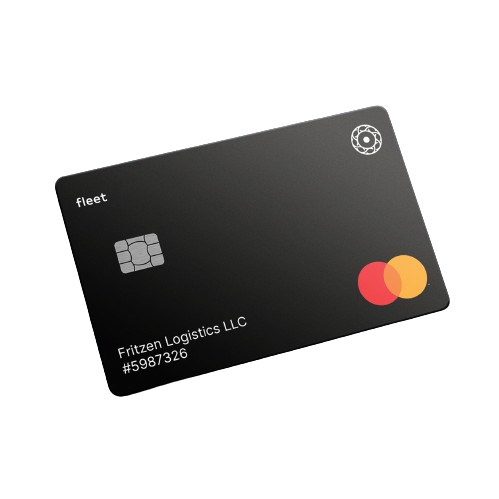What Are Non-IFTA Miles?
In many ways, motor carriers are the true unsung heroes of the American workforce. Without them, consumers across the country wouldn’t have access to many of the products and services they enjoy in their drug stores, boutiques, grocery stores, or even local corner shops.
In order for drivers to get from point A to point B as efficiently as possible, they need to drive plenty of miles on lots of fuel. However, not every mile is treated the same.
This begs the question, in regard to what IFTA is, what are non-IFTA miles?
Essentially, non-IFTA miles (or non-International Fuel Tax Agreement miles) are miles driven in areas that are designated as non-IFTA jurisdictions. This means that the fuel used and miles driven in these areas are taxed differently than in IFTA jurisdictions. All miles driven in IFTA jurisdictions are taxable miles. As a result, Total IFTA Miles and Taxable Miles are usually the same when you’re filling out your IFTA report.
As a fleet owner operator, understanding non-IFTA miles and how they can impact your IFTA reports can help simplify your IFTA reporting and ensure you stay compliant.
Non-IFTA Miles: What You Need to Know
Non-IFTA miles are any miles that are driven throughout jurisdictions not outlined in the international fuel tax reciprocity agreement. If your fleet is registered under IFTA, you’re able to travel throughout IFTA jurisdictions without having to get a temporary trip permit.
To make sure that you’re compliant with the relevant IFTA requirements, you need to report all of your fuel usage and mileage to your home state. So, when you fill out and submit your tax return, you’re going to have two separate tallies:
- One for total IFTA miles
- One for non-IFTA miles
It’s important to keep accurate records for when you complete your quarterly IFTA report. These include everything from any miles driven through an IFTA-only jurisdiction, non-IFTA state miles, personal conveyance miles, and any mileage that comes from driving around the yard.
Examples of Non-IFTA Miles
Not sure what counts as non-IFTA mileage? Here are a few common examples to watch for when logging your miles:
- Yard Moves: Any driving done within a terminal or yard that doesn't cross public roads
- Personal Conveyance: Miles driven during personal time, like traveling from a hotel to a restaurant or going home after a delivery
- Miles in Non-IFTA Jurisdictions: Driving in places like Alaska or the Yukon
- Toll Roads or Private Property: Travel within toll facilities or private access roads that don’t require reporting to IFTA
Accurately categorizing these types of trips helps ensure you don’t overreport taxable miles on your IFTA return.
What States Are Not Part of IFTA?
Almost all of the United States and Canada have jurisdictions that are part of IFTA. However, there are a few places that aren’t included. In the US, these are:
- Alaska
- Hawaii
- District of Columbia
In Canada, all provinces are IFTA jurisdictions, except for three territories. These are:
- Northwest Territory
- Nunavut
- Yukon Territory
In addition, Mexico is not part of IFTA. If your fleet travels across the southern border, you’ll need to follow separate fuel tax regulations specific to each Mexican state. For all of these non-IFTA jurisdictions, you’ll need to follow the relevant procedures and file the proper fuel tax returns that are required by the individual areas.
{{CTA}}
How is IFTA Mileage Calculated?
Accurately calculating IFTA can be incredibly important when you file your fuel tax return. Though learning how to calculate miles for IFTA can be a little intimidating, the good news is that there are some simple steps that you can follow to ensure everything goes smoothly.
The first step is to calculate all of your mileage. That means keeping track of all the miles you traveled in each IFTA jurisdiction, as well as fuel receipts for each fuel type and IFTA tax rates for the relevant quarter. You can do this in a few different ways:
- By manually tracking readings from your odometer
- By using a trip mileage calculator
- With an automated IFTA mileage tracker
Now it’s time to determine your fuel mileage. To do this, you’ll need to:
- Add the number of taxable gallons of fuel that were purchased while on the road
- Add the total taxable miles that you traveled across all jurisdictions
- Divide the number of taxable gallons by the number of total miles
From there, you’ll end up with your fuel mileage, which will then let you calculate the amount of fuel you’ve used—or your fuel usage. Then, all you need to do is multiply the fuel mileage by the total miles driven.
Finally, you’re ready to calculate the total fuel tax amount for IFTA, which is the total difference between any tax you must pay and any tax you’ve already paid.
It’s at this point that the relevant tax rate for the specific jurisdiction you drive in will come into play.
To calculate the IFTA fuel tax amount, simply multiply your fuel consumption by the tax rate for the jurisdiction those miles were driven.
It’s worth noting that there are a few states that charge an additional surcharge fee. When this is the case, simply use the same steps outlined above, but instead, multiply your fuel usage by the surcharge rate.
Remember that IFTA returns are due at the end of the month following each calendar quarter. For reference, reports are due by April 30, July 31, October 31, and January 31 each year.
Take Your Fleet to a Whole New Level with AtoB
Accurately tracking your fuel usage and mileage and keeping your overhead costs low are critical parts of operating your fleet. With a fuel card that’s accepted nationwide, AtoB can help keep your drivers on the road for less. With the AtoB fuel card, there’s no credit score required—and with a ton of competitive discounts, you can save on more than just fuel.
Plus, with an easy-to-use dashboard, you can set spending limits and track all of your drivers' live transactions, including transactions for fuel. Then, when you’re ready, you can pay contracted drivers and motor carriers through a payroll process that’s easy and instant.
Let AtoB keep your weekly fuel and maintenance spend as low as possible while ensuring accurate records for all of your IFTA reports. Contact us today to learn more.
Sources
Everything You Need to Know About IFTA. BigRoad. https://blog.bigroad.com/blog/everything-you-need-to-know-about-ifta
What is IRP? How Do You Know What Distance to Report for Your IFTA Miles and IRP Reports? eTrucks. https://www.etrucks.com/what-is-irp-what-distance-to-report-for-ifta-miles-and-irp-reports/
IFTA Member Jurisdictions. California Department of Tax and Fee Administration. https://www.cdtfa.ca.gov/taxes-and-fees/iftajuris.htm#us
Easiest Way to Calculate Your IFTA - A 4 Step Guide. Switchboard. https://onswitchboard.com/blog/easiest-way-to-calculate-ifta/
Get started with AtoB

Reviewed by
Vedant Khamesra is the driving force behind product management at AtoB. Specializing in strategic partnerships, SMB solutions, and new product development, Vedant seamlessly navigates P&L responsibilities while leading product execution and strategy. He is fueled by AtoB's mission to empower truckers and fleets with intelligent financial tools and services, making their lives easier and more rewarding.



